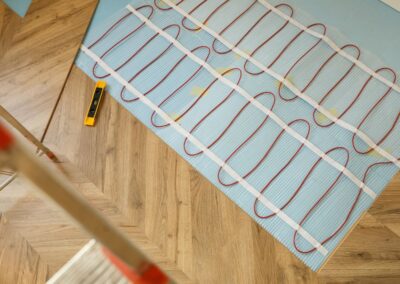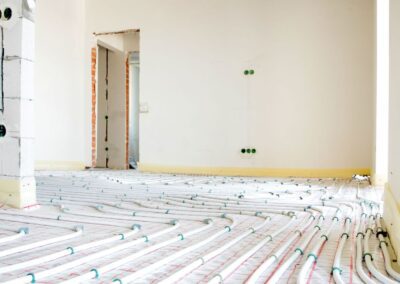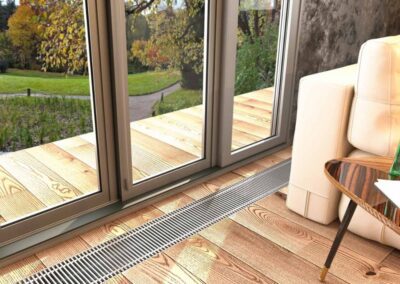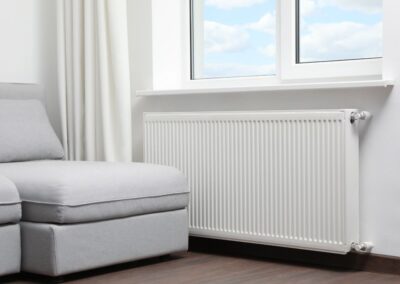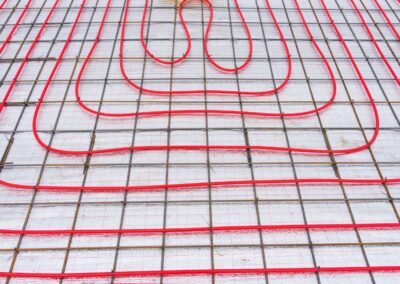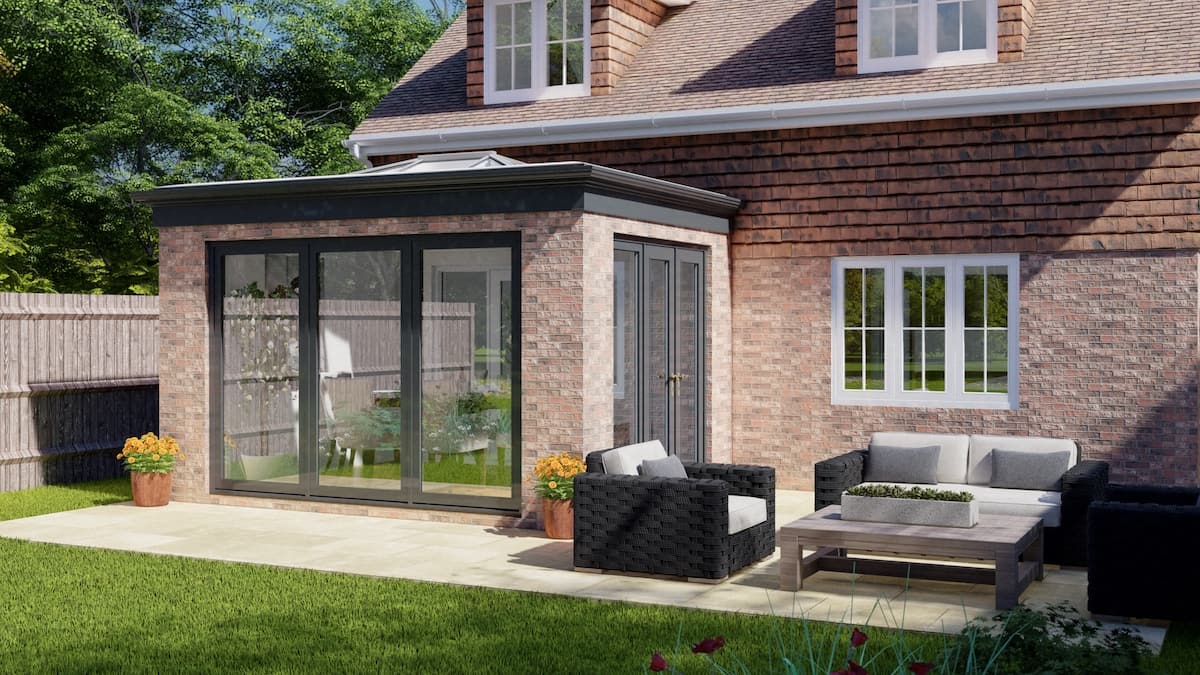Do I Need Heating In An Orangery?
Today’s Orangeries are constructed with insulated materials which will allow you to use your room all year round and built correctly, will need no more than any other extension. However, even the most energy efficient extensions will feel it when the temperature drops.
The location and orientation of your Orangery extension, whether north, south, east or west can be a contributing factor. The frequency of use of the Orangery will also need to be considered when deciding on the heating system as well as if it’s built to seamlessly flow from another room such as a kitchen. Often, the Orangery or Garden room may be an integral part of the home which is used from first thing in the morning to late into the evening, or it may be used infrequently – a quiet retreat for when a little precious ‘me time’ can be found.
Incorporating the correct heating system is therefore important when planning any Orangery project, and there are many singular options available which will be explained in detail below, although the final solution may incorporate a couple of heat sources to provide you with the greatest flexibility. To help you make an informed decision, the following article provide a guide to the different heating in an orangery.
DOES THE TYPE OF EXTENSION AFFECT MY HEATING CHOICES?
How the Orangery is built onto your existing structure may dictate whether you have the space for certain types of heating such as wall/floor mounted radiators.
Whether or not your room is built incorporating a low wall into the design, will also dictate whether you can include low wall radiators, kick space heaters this are in plinths in kitchen units or other heat source to the low wall.
If running out of options, there are many space saving alternatives for providing heat for your room.
CAN I EXTEND MY CENTRAL HEATING SYSTEM?
Connecting your Orangery’s heating system to your domestic central heating system can be the most cost-effective way to heat the room if your boiler has enough capacity, whether to wall mounted or floor standing radiators or to underfloor heating.
The Orangery’s heating will depend on the capacity and proximity of the boiler, and it will only heat up when the rest of the house is being heated unless there is a completely separate feed from the boiler into the garden room, and where you are able to control this heating on a separate timer/ Thermostat. Of course with modern wireless technology, this makes it a lot simpler to manage nowadays.
It’s advisable to consult a plumber, and building control and SAP calculations may be necessary for extending the existing wet system into the Orangery. If you are only able to spur from a radiator in an adjacent room and heating in an orangery has to come on at the same time as your home, it may be necessary to consider backup heating for certain times of the day and in summer.
WHAT ARE SPACE-SAVING SOLUTIONS TO HEATING YOUR ORANGERY?
Having your heating embedded in the floor under your tile or floor finish is an excellent way of heating your room without any visual sign of heating. They are great for new projects where you are able to incorporate insulation under your choice of heat, therefore maximising the efficiency of your pipes or cables. Underfloor heating works best when kept on low to maintain a constant ambient temperature and slow release of heat. It does not provide instant heat after being turned on so a backup heat source may be necessary.
IN-SCREED ELECTRIC UNDERFLOOR HEATING
This system comprises heating cables fixed onto insulation resting on the concrete sub-base. The cables are then screeded over. The flexibility of the cable allows for variable power outputs. This system will not provide instant heat if it has been switched off for a longer period of time, therefore a backup heat source should be considered if this is a requirement. Kits generally comprise of the heating element encased in a plastic cable and thermostat.
UNDER-TILE ELECTRIC UNDERFLOOR HEATING
Underfloor heating offers even heat distribution, enhancing comfort and efficiency while freeing up space and improving aesthetics. It reduces dust circulation, benefiting allergy sufferers, and provides the luxury of warm floors. However, it can have higher installation costs, and need to be taken into account with regards to the floor levels slightly. It can also have a slow response time and can be expensive to run in larger spaces. Maintenance and repairs are challenging, and not all flooring types are compatible. For orangeries, underfloor heating is appealing due to its consistent warmth and unobtrusive design, but installation costs and flooring compatibility must be considered.
IN-SCREED WATER UNDERFLOOR HEATING
This is an effective way of heating your room if you have a boiler with the capacity to extend your plumbed in system into a Bespoke Orangery. The system comprises of continuous water pipes fixed to insulation resting on the concrete sub-base. The pipework is then screeded over. The whole system is then connected into your domestic central heating system by means of a manifold which will need to be hidden somewhere in or near the room. This method of heating is very dependent on the capacity and proximity of your boiler without running into significant additional costs.
TRENCH HEATING
A very traditional method of providing heat within your Orangery where the heating is placed in a trench within the Orangery baseworks, and then covered with decorative cast iron floor grilles.
Although costly to build the trench and install, they are very attractive in a Traditional Orangery setting.
TRADITIONAL RADIATORS
Radiators can create a feature in an Orangery and there are many styles available these days from traditional to contemporary. Radiators can be plumbed in to your water system or oil filled electric will provide you with heating through a totally independent system.
To use radiators as your main form of heating, you will require sufficient wall space within your room to support the heaters, making it a less desirable option if you prefer to use wall space for furniture, especially in small orangery extension ideas. So bear this in mind when deciding the size of your orangery as they can do take up space. Extending your existing wet central heating system through into the orangery extension will require both Building Control and SAP calculations.
CONCEALED RADIATORS
Radiators, kick space heaters or air source heating can be used in conjunction with radiator covers, built as part of the low wall in your Orangery.
A standard sill of around 300mm can be extended to provide a comfortable seating area or deep ledge for ornaments. The radiator covers/window seating can be made to any depth and with a variety of finishes to the front and top to assist air movement. Again, radiators can be plumbed into your water system, oil filled electric or convector heating to provide a totally independent system.
ATMOPSHERIC HEATING FEATURES
Clients have, over the years, put many and varied features within their Orangery, to both heat the room and assist ambience – from open fireplaces to log burners and electrical stoves.
Features such as these in a room requires a lot of thought and planning and calculations as a ventilated Orangery will bring added complications to fire options. Local planning department will need to be heavily involved in the design and installation process.
